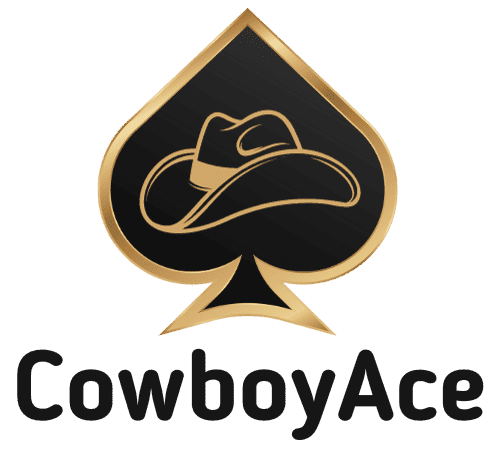American Horse Breeds: Most Popular
Hey, fellow horse enthusiasts! Get ready for a ride as we delve into the captivating world of America’s horse breed.
Imagine this: an adventure where these incredible four-legged companions aren’t just animals but true champions stealing the spotlight and captivating hearts everywhere. So put on your cowboy hat and grab some carrots (for our equine friends!). Let’s dive into the realm of these horses!
In American equines, certain breeds have truly shined with their mesmerizing charm and remarkable versatility. Whether you’re an equestrian, a soul, or simply looking for a reason to don some chaps (no judgment here!), these horse breeds can capture hearts from coast to coast.
From lightning speedsters that give racetracks a run for their money to giants that could easily be mistaken for skyscrapers and, from acrobatic athletes that put Olympians to shame to versatile all-rounders who can make any ranchers day brighter – we’ll introduce you to the crème de la crème of the equestrian world.
But these horses aren’t just ordinary; they are the superstars of the horse world. They have not perfected stealing the spotlight. It has also made a lasting impact on American history and culture.
So get ready for a ride, folks! It’s time to put on your cowboy hats and join us as we explore these horses’ captivating stories, unique characteristics, and thrilling adventures.
Prepare to be entertained, educated, and perhaps even inspired by the equine heroes that bring America’s world to life with all its wildness and wonder!
Brief Overview of the Significance of Horse Breeds in American History and Culture
The origin story of American horses can be traced back to the arrival of Spanish explorers who brought their sturdy Andalusian and Barb horses to North America. This marked a turning point as horses became an essential tool for frontier exploration, trade expansion, and war campaigns.
Native Americans quickly adopted horsemanship from Spanish settlers. They integrated it into their cultures with remarkable skill, forever changing their nomadic way of life as they galloped across vast open ranges on these new steeds.
As European settlements spread throughout America’s fertile lands, regional patterns of work emerged that required specific types of horses.
The New England region relied heavily on light horses for transportation, while harness racing gained popularity with trotting breeds such as Morgan Horses.
In contrast, further westward, where larger agricultural operations thrived, draft breeds like the majestic American Cream Draft became popular for heavy farm work.
Selective breeding practices were crucial in shaping distinct horse breeds uniquely adapted to different tasks. For example, in Kentucky during the late 18th century emerged what is now known as one of America’s most famous breeds – the Thoroughbred – selectively bred for exceptional speed over short distances.
These horse breeds later dominated horse racing circuits across America. More recently, equestrian competitions have become a prominent aspect of American horse culture.
Disciplines such as dressage, show jumping, eventing, and Western riding showcase various breeds’ versatility and athletic prowess.
Notable among these are the American Saddlebred, renowned for its elegance and grace in the show ring, and the agile Quarter Horse, favored in rodeo events and cutting competitions.
Importance of Preserving and Promoting Horse Breeds
Preserving and promoting horse breeds is conserving genetic diversity and safeguarding cultural heritage.
Each breed represents a distinct lineage that embodies America’s rich equestrian history. Understanding and appreciating their unique characteristics gives us insight into earlier generations’ triumphs, struggles, and achievements.
Keeping these breeds alive ensures that future generations can experience the connection between humans and horses that has been integral to America’s identity.
The sure-footedness of Appaloosas on rugged terrains or the endurance capabilities of Mustangs over long distances reminds us of the horses’ adaptability in diverse landscapes.
Moreover, supporting native American horse species contributes to local economies by fostering equine-related industries such as breeding programs, training facilities, and tourism ventures centered around equestrian activities like trail riding or equine therapy programs.
These endeavors create jobs and strengthen rural communities with an economic boost while preserving a unique cultural heritage. Understanding the significance of horse breeds in American history gives us a deeper appreciation for their role within our cultural tapestry.
Preserving these noble animals through efforts such as breed registries or conservation organizations ensures that future generations can continue to witness their magnificence firsthand.
By recognizing their historical and cultural importance today, we secure a vibrant legacy for these remarkable creatures and the profound connection they forge with the American people.
Historical Background
Arrival of Horses in North America with Spanish Conquistadors
The arrival of horses in North America can be traced back to the early 16th century when Spanish conquistadors, led by explorers such as Hernán Cortés and Francisco Vázquez de Coronado, embarked on their expeditions. These journeys brought horses from the Iberian Peninsula to the New World.
The introduction of horses to the indigenous populations of North America had a profound impact on their way of life. Native American tribes quickly recognized these magnificent animals’ immense value and adaptability.
Influence of Native American Horsemanship on Early American Horse Breeding Practices
Native Americans played a crucial role in shaping early American horse breeding practices. Their deep understanding and reverence for these creatures allowed them to develop unique horsemanship skills.
Native Americans selectively bred horses based on desirable traits, such as endurance, agility, temperament, and suitability for specific tasks or environments.
This combination of natural selection and intentional breeding resulted in robust regional patterns of workhorse breeds. During this time, some tribes developed their own distinct breeds that were well-adapted to local conditions.
For instance, the Nez Perce tribe developed the Appaloosa breed, known for its distinctive coat pattern with spots or speckles. Similarly, other tribes nurtured breeds like the Tennessee Walker Horse with its smooth “running walk” gait or the Morgan Horse, renowned for its versatility and gentle nature.
Development of Distinct Horse Breeds during the Colonial Period
The colonial period marked a significant turning point in horse breeding practices within North America. As European settlers established colonies along the eastern seaboard, they brought various horse breeds from Europe predominantly used for transportation and agriculture.
Over time, through a process combining natural selection and selective breeding practices, a new generation of American breeds began to emerge. One of the most recognizable horse breeds tracing back to this era is the Quarter Horse.
Originating in colonial Virginia and the Carolinas, Quarter Horses gained popularity due to their remarkable speed over short distances, especially within a quarter mile – hence their name. These agile horses were important in various tasks such as cattle herding and farm work.
Additionally, during this period, the influence of English Thoroughbred horses became prominent. The Arabian horse bloodlines infused into Thoroughbreds enhanced their speed, endurance, and gracefulness.
The American Thoroughbred breed developed alongside its European counterpart but eventually established its distinguished identity. The history of uniquely horse breeds is deeply intertwined with significant historical events and cultural interactions.
The arrival of horses with Spanish conquistadors opened up new possibilities for Native Americans who embraced horsemanship and contributed greatly to early American horse breeding practices. The colonial period then witnessed the evolution of distinct horse breeds like Quarter Horses and Morgan Horses that continue to capture our admiration today.
Major American Horse Breeds
American Quarter Horse
The American Quarter Horse, one of the most iconic horse breeds, originates deeply rooted in colonial Virginia and the Carolinas. Bred for their exceptional speed, versatility, and athleticism, they quickly became indispensable to early settlers.
Their ability to sprint short distances with unmatched agility and power earned them the name “Quarter” Horse since they were often used for quarter-mile racing.
However, their talents extended far beyond the racetrack. Quarter Horses became renowned for their versatility in Western riding disciplines such as rodeo events and cutting cattle.
Their innate cow sense and quick reflexes made them indispensable on ranches throughout the western United States. Today, they remain an integral part of American equestrian culture.

Thoroughbred
Tracing its lineage back to English imports during the colonial era, the Thoroughbred is synonymous with speed, endurance, and gracefulness. These elegant horses quickly found favor with early American settlers who recognized their potential on both flat tracks and over jumps.
The Thoroughbred breed was developed through careful selective breeding, focusing on superior racing traits like speed and stamina.
This breed’s influence in racing cannot be overstated; it has played an important role in shaping the sport in America and worldwide. Thoroughbreds continue to captivate audiences with their beauty, competitiveness, and sheer power, from prestigious races like the Kentucky Derby to harness racing events nationwide.

Morgan Horse
The Morgan Horse holds a unique distinction as being one of America’s oldest recognized horse breeds developed entirely within its borders. Descended from a single foundation stallion named Figure – who possessed exceptional conformation and temperament – Morgans have become known for their versatility across various disciplines.
With remarkable intelligence that complements their strong work ethic, Morgans have excelled in harness racing, carriage driving, and pleasure riding.
These horses possess the stamina for long-distance travel and the refined beauty that turns heads wherever they go. Their heritage rooted in New England adds a touch of historical charm to their legacy as one of America’s beloved horse breeds.
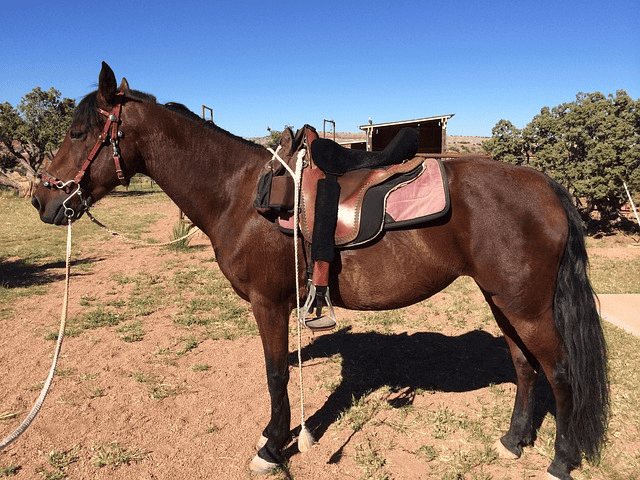
Lesser-Known American Horse Breeds
Tennessee Walking Horse
Originating in Tennessee during the late 18th century, the Tennessee Walking Horse is celebrated for its unique “running walk” gait. This breed’s smooth and comfortable ride has made it increasingly popular for pleasure-riding enthusiasts seeking an enjoyable experience.
The distinct gait allows riders to cover long distances while maintaining a relaxed pace easily. Beyond their smoothness, Tennessee Walking Horses also possess exceptional endurance and versatility, making them suitable for various equestrian activities.
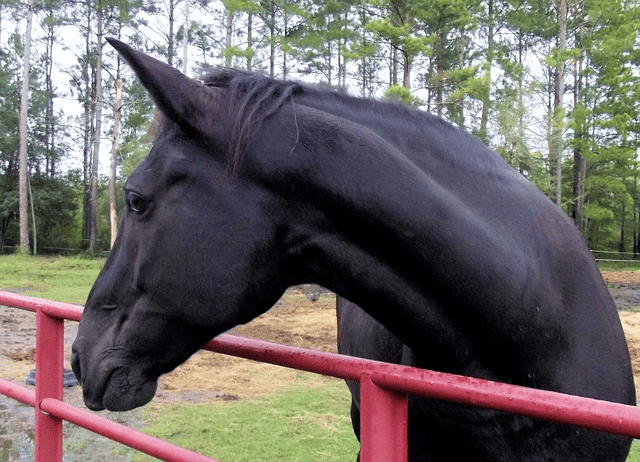
Appaloosa
The Appaloosa breed owes its development to the Nez Perce Native Americans, who carefully bred horses with distinctive coat patterns characterized by spots or speckles. This breed flourished within the tribe’s territories in what is now Idaho, Oregon, and Washington states.
Known for their striking appearance and hardiness, Appaloosas rapidly gained popularity outside Native American communities.
Today, they are recognized by the Appaloosa Horse Club as one of North America’s largest breed registries. The Appaloosa’s eye-catching coat pattern sets them apart from other breeds.
At the same time, their versatility enables them to excel in various disciplines, such as Western pleasure riding, trail riding, and even jumping.
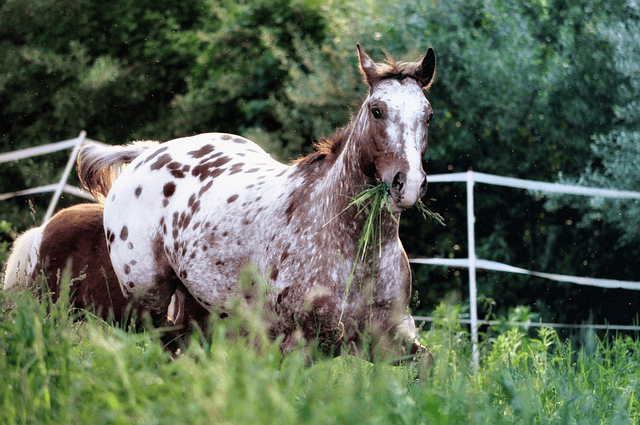
Missouri Fox Trotter
Let’s enter the world of the Missouri Fox Trotter, a horse that offers more than a ride—it provides an experience. These magnificent creatures possess an allure like a friend inviting you to embark on life’s adventures together.
Picture this: as you settle into the saddle, the Fox Trotter’s unique gait carries you with elegance. You’re gracefully waltzing through the countryside and dancing with nature.
Their chestnut coats radiate warmth, and their soulful eyes whisper secrets of fields and tranquil trails. It’s as though they hold the key to serenity guiding you along life’s pathways.
These horses embody elegance with an added touch of the charisma of old movie stars. Riding a Missouri Fox Trotter is akin to being transported into a Hollywood film, where each moment becomes a memory.
Whether embarking on a trail ride exploring landscapes or simply cherishing the bond between horse and rider, the Missouri Fox Trotter brings joy and warmth to every stride. They are not horses; they are companions who are always ready to accompany you on life journeys.
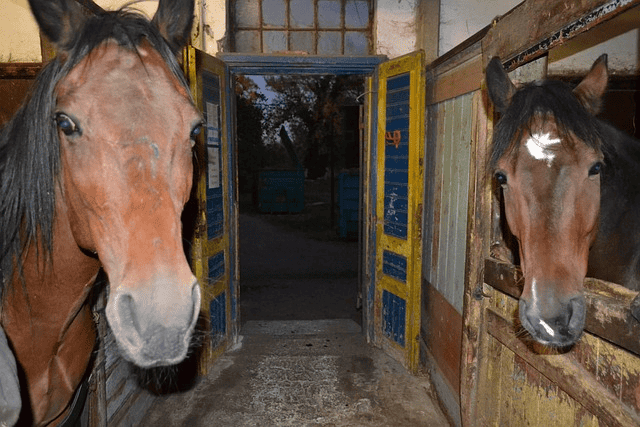
Conclusion
As we reflect on these magnificent horse breeds – from the well-known Quarter Horse and Thoroughbred to lesser-known gems like the Tennessee Walking Horse and Appaloosa – it becomes clear that they embody both our rich equestrian history and our enduring connection with these remarkable animals.
Their importance in shaping the American West, participating in regional work patterns, and contributing to various equestrian disciplines cannot be overlooked.
These horses continue to captivate hearts with their beauty, intelligence, and versatility. As we cherish and preserve these remarkable breeds, we ensure their legacy remains intact for generations, bringing joy and inspiration to horse enthusiasts worldwide.
Question & Answers
Are any horse breeds native to America?
Long ago, before the first horse hoof met the New World’s soil, North America cradled its own breeds. Their echoes may have faded, but various American horse breeds have been cultivated since Europeans brought horses here. Breeds like the Tennessee Walking Horse, Missouri Fox Trotter, and Florida Cracker Horse grace this land with their presence.
What American horse breed is known for its strength?
The stories whispered among horse lovers often sing praises of the American Quarter Horse, a breed whose athletic ability and might are unparalleled, especially in short-distance races.
What are the recognizable horse breeds?
Ah, a tapestry so rich! From the fiery Arabian horse to the gentle Belgian Draft Horse, the robust Morgan Horse to the spirited American Miniature Horse, our world is embellished with an abundance of breeds.
Are there American horse breeds?
Like stars in the Western United States’ vast skies, numerous breeds sparkle across the American landscape. There’s the rhythmic trot of the Tennessee Walker, the smooth gait of the Rocky Mountain Horse, and the distinctive patterns of the American Paint Horse.
What is the most popular horse breed in America?
Amidst the symphony of hooves, the American Quarter Horse rises like a classic refrain, a beloved melody in the hearts of many.
What horse was initially bred in America?
The Mustang, born from the fiery spirit of the Spanish horses brought to the shores, now roams free, embodying the wild heart of the Western United States.
What are all the horse breeds?
To list them all would be a dance through time! From the Shetland Ponies of the British Isles to the Curly Horses with unique coats, from the Nez Perce Horse with its storied history to the English Thoroughbred that revolutionized horse racing, our world is painted with countless breeds.
What breed of horse is native to North America?
When tales of freedom are spun, the Mustang often takes center stage, a living testament to the spirit of the wild.
What horses did the Cherokee use?
The rich tapestry of Cherokee history is interwoven with the steps of the Spanish Mustang and, later, the sturdy strides of the American Quarter Horse.
How many types of horses are there in the US?
With its vast landscapes from the Colorado high plains to the Carolina marshes, the US is home to many breeds. Among them are gems like the Carolina Marsh Tacky, the American Cream Draft, and the ever-versatile American Warmblood.
What are the most popular horse breeds in North America?
Standing tall amidst this equine symphony are the American Quarter Horse, the Tennessee Walking Horse known for its running walk, and the charming Morgan Horse.
Are there any American horse breeds?
Indeed, amidst the many breeds that trot across the globe, America boasts of its own – from the elegant American Saddlebred to the agile American Miniature Horse and even the rare Colorado Ranger.
